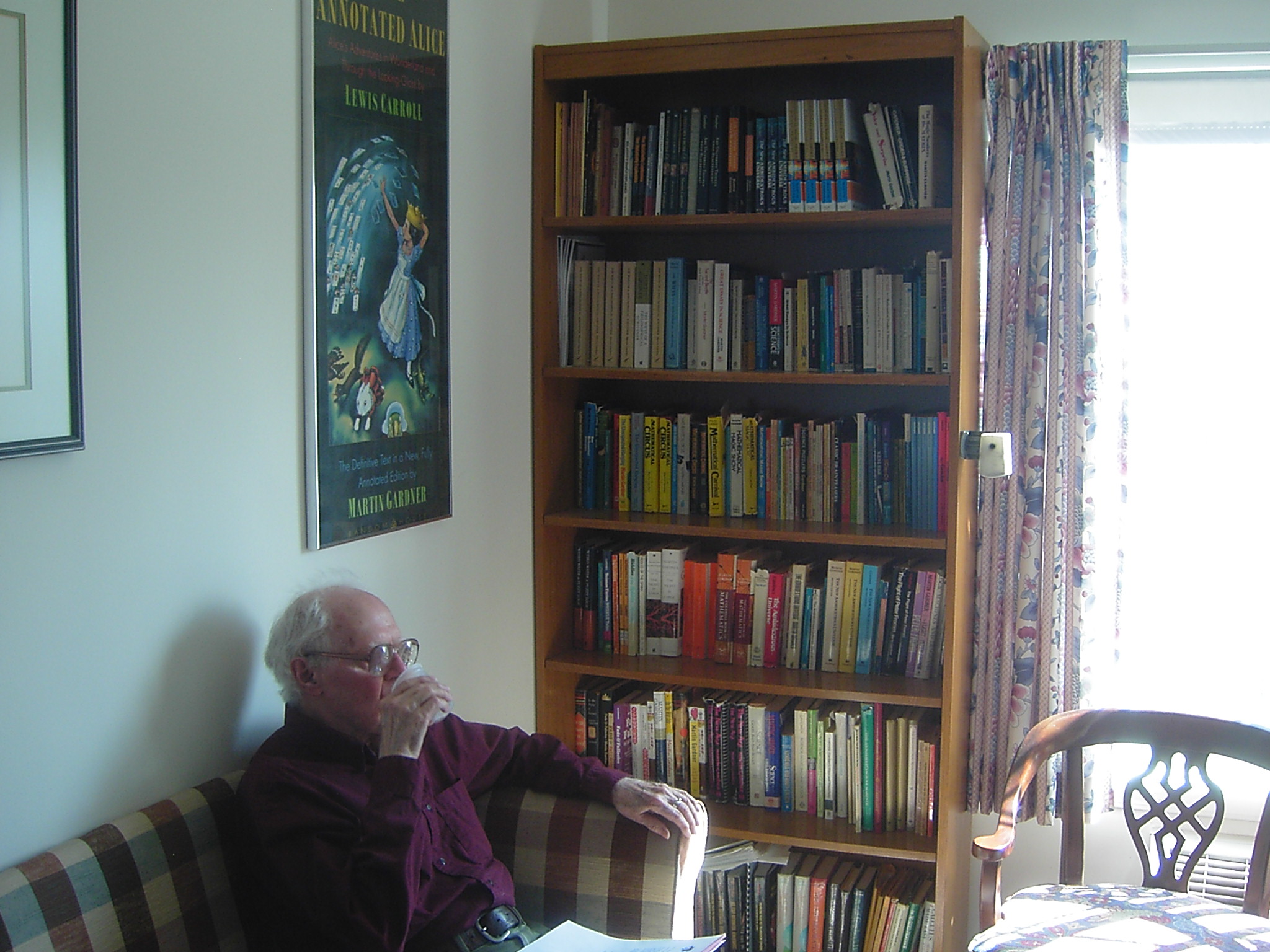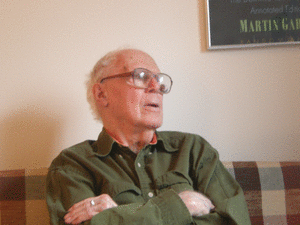Remembering Martin Gardner

Huffington Post:
Martin Gardner--The Best Friend Mathematics Ever Had(All photos on this and related webpages are copyrighted and may not be used without permission.)
An intellectual giant, brilliant expository writer and one of the great American men of letters of the 20th century, Martin Gardner died on Saturday, 22 May 2010, aged 95. The photograph shows him taking a well-earned break in March 2006, having written every book on the six shelves beside him. He went on to write many more over the next four years.
"We all know (intellectually) that no one is immortal, but I think that Martin will come the closest to being so among all the people that I know." (Ron Graham, personal communication)

An animated Martin in March 2008. (Thanks to Matthew Temba for assembling this gif)
"So it is a very sad day to think that such a person is gone, and that so many of us owe him so much, and that so few people -- even extremely intelligent, well-informed people -- realize who he was or have even ever heard of him. Very strange. But I guess that when you are a total non-self-trumpeter like Martin, that's what you want and that's what you get. And so perhaps it's all for the best that he remains sort of hidden behind the scenes, known only to a special set of people." (Douglas Hofstadter, Scientific American website)
Martin Gardner's family has requested that anyone wishing to make a contribution in his honor may do so through either of these foundations: